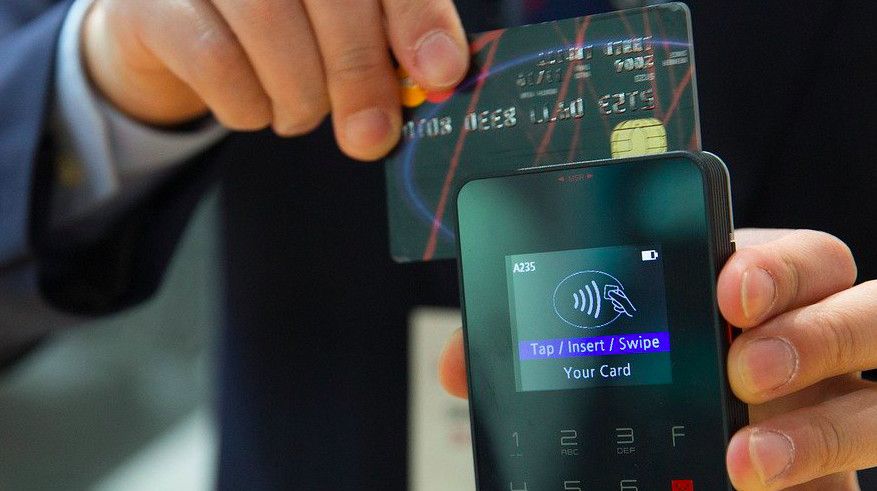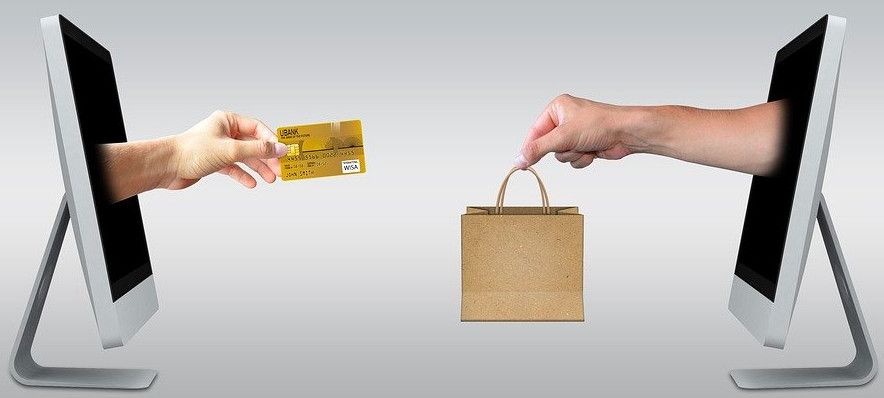Alipay and WeChat payment have been very convenient and practical. Why does the central bank still launch DCEP?
Source: vernacular blockchain
After entering the public's field of vision around 2014, the central bank's digital currency (DCEP) will become the focus of social attention at regular intervals. And every time it appears on the hot search list, it is almost always accompanied by these questions:
- The current society has already had very convenient mobile payments, and the form of currency has been electronically. Why do you want to engage in so-called digital currency?
- What is the difference between it and the payment function of Alipay and WeChat?
- Is it a competitor or a partner between the two?
In the face of these questions from the general public, many articles start with a special professional currency circulation system, which makes the readers who are “unclear” more confused.
In fact, Avenue to Jane: Many successful products, the principles behind them are often not particularly complicated, but people have not thought or believed it.
- DeFi: Ether Exodus?
- Viewpoint | Data visualization of stable currency DAI
- Mosaic/Coinbase Joint Report: Development Status of Anonymous Coins
01 The key to the development of mobile payment: the strong cooperation of traditional banks
The same is true for digital currency, and the principles behind it are not necessarily so difficult to understand. For a few reasons, the central bank's digital currency (DCEP) sponsors are currently not comfortable enough to explain it too thoroughly. In fact, to understand the difference between the blockchain digital currency that the central bank pays attention to and the mobile electronic payment that people are used to, the first thing to understand is the general principle of mobile electronic payment.
As we all know, electronic payment as an "Internet + financial" product, but also one of the most well-known "Internet +" products, its success is inseparable from the support of the Internet industry and the financial industry.
However, looking at the related public opinion in recent years, when people evaluate mobile payment, they have never regretted leaving all kinds of beautiful words to the Internet companies that develop front-end products, but it is easy to overlook another thing, that is, on the move. In the development process of payment, traditional financial institutions (especially banks), which are often considered to be “institutional rigid”, actually play far beyond the imagination of the outside world.
Specifically, in the process of mobile payment development, traditional financial institutions have carried out two important tasks: one is to create bank accounts for a large number of users at low cost, and the other is to provide settlement services for massive online transfers.
Without these underlying work, mobile payments simply don't work. When the mobile payment service is just started, users need to do an important job – that is, bind their social media accounts to the bank card. In other words, Internet products actually play more like a front-end traffic portal, and the back-end related to capital flow is mainly done by banks.
But the problem is that whether it is to create accounts for users quickly, or to settle a large amount of funds transfer, these two jobs are not business that can directly create benefits for banks, but the cost is quite high. Taking the creation of a bank account as an example, the related work requires a large amount of card issuing material cost, counter labor cost, network construction cost, ATM equipment cost…

Why is the bank willing to do such a thankless job?
The main reason is that China's banking industry is dominated by state-owned capital, and state-owned capital is usually required to assume part of its social responsibility. This is why China's banking industry is able to invest heavily in financial infrastructure and open up payment interfaces under the requirements of the digital economy.
In fact, looking at the development of mobile payment, we can easily find that the technical level of Internet companies has always been the biggest bottleneck faced by this business development, and financial enterprises are.
Why are many countries with developed Internet technologies failing to develop mobile payment services?
It is not because the technology of the local Internet company is not good. After all, the transfer of funds is essentially a change in the digital information of the books. The current Internet technology can fully meet this demand.
The most important reason is that the local financial industry is not well coordinated, either the infrastructure is not perfect or the company is not willing to cooperate with Internet companies. There is no way to form a close cooperation between the Internet industry and the financial industry like China. This is why mobile payment can only be widely spread in China, and it is difficult to promote it in other countries.
So, for other countries outside China, do they want to develop and popularize the mobile payment business?
Of course, this is not only a question of how smooth the payment experience is, how much time and energy costs can be saved, but more importantly: the full electronicization of the payment process is actually equivalent to the formation of value circulation in the digital world. network of.
Only on the basis of this network is it possible to develop high-frequency online merchandise flows and service flows, which is like the existence of money, which is likely to produce efficient trade.
In other words, the existence of electronic payment based on smartphones is a very important foundation for the development of the digital economy.
In the past few years, many entrepreneurial outlets that people have experienced, such as e-commerce, live broadcast, take-away, shared bicycles, and knowledge payment, are inseparable from mobile payment support. Imagine that without these efficient payment methods, people can only stay at the stage of POS card swiping or even offline cash payment, then these prosperous economic ecology is difficult to develop anyway.
02 The real positioning of digital currency: overseas version of mobile payment
However, the emergence of blockchain technology has changed this situation.
For those who want to develop mobile e-payments but are trapped in the local financial industry, blockchain technology can now help them bypass the two barriers to “Internet + finance”.
First of all, in the aspect of account creation, it is very difficult to create an account on the digital wallet. Even if it is a centralized trading platform, its KYC efficiency is relatively high. This is incomparable in many countries.
Secondly, unlike the centralized bank transfer network, which can switch the payment interface at will, the decentralized blockchain network is open. Unless there is manual review, any user can freely value on the blockchain network. Transfer.
At the same time, the blockchain has the characteristics of being non-tamperable. It has natural credibility and credibility for the recorded information of the account, which has jumped over the two thresholds for developing mobile payment.

In fact, friends who have experienced the digital wallet QR code transfer should have a similar feeling: in addition to the difference in experience such as private key, transfer fee, and arrival speed, the process of scanning the code payment with the digital wallet, The process of scanning and paying with Alipay and WeChat is very similar. Because these two products are essentially one type of thing, only one is built on a centralized financial network, and the other is built on a decentralized blockchain network.
As a result, the mismatch of the traditional financial industry no longer constitutes a development obstacle, and mobile payment based on blockchain technology can be carried out in any region of the world.
Of course, due to the technical problems of transfer speed and private key verification, digital transfer may require some product optimization to get close to the current experience of mobile payment, just as the process of entering the transfer address is simplified to scan the QR code. .
Therefore, the biggest difference between the blockchain-based digital currency and Alipay currently used is:
For ordinary users, if they are in the country, then when making mobile payments, whether the funds are transferred on the centralized network or in the decentralized blockchain, there is no difference in the front-end experience, and They also don't care about this difference. At most, there may be differences in handling fees at the time of withdrawal. After all, in theory, the operating cost of the blockchain system is lower than that of the traditional financial gateway.
However, if they are abroad, especially those who are out of the coverage of Chinese banking (such as the Chinese circle), if they want to use mobile payment at this time, then the payment tool must be built in the decentralized block. It can only be run on the chain network. Otherwise, you have to use the POS machine or cash. Because the experience of the past few years tells us that due to the obstacles of infrastructure and related systems, most centralized financial institutions are often unable and unwilling to help create a transfer network that supports electronic payments.

Through the above analysis, it is not difficult to infer why the Chinese central bank is very interested in developing digital currency:
On the one hand, in the domestic market, digital currency based on blockchain is likely to play a role in reducing the settlement burden of financial institutions and reducing the operating costs of existing mobile payment systems. Of course, this is only an intuitive expectation of reducing the cost of the blockchain. It remains to be seen how the specific operation will be.
In fact, the current heavyweight of the central bank's digital currency is on the international market on the other hand. Beyond the coverage of Chinese financial institutions, a convenient and natural credible blockchain is used as the base for mobile payment, allowing the digital RMB to benefit from the blockchain mobile payment. Going out to sea, and thus increasing the degree of internationalization of the renminbi.
03 Positioning of the central bank's digital currency: Keeping pace with the times
It should be pointed out that although the current position of the central bank's digital currency is mainly based on the blockchain to improve the degree of internationalization, in the ever-changing digital currency industry, it is difficult to assert that its leader will not make a big position in its future. Change.

There has been a major adjustment in the positioning of the central bank's digital currency : when the concept of the central bank's digital currency was first proposed around 2014, it has little to do with the C-side payment scenario and blockchain technology.
At that time, mobile payment was not fully popular, and blockchain technology has not received enough attention. At that time, the central bank's digital currency could also reduce the cost of banknote transportation for inter-bank institutions, which is somewhat similar to the paperless office promoted by early government agencies.
The shift in its development orientation was mainly after the emergence of Libra. Digital currency is not only embedded in the bank app of ICBC's ordinary users, but also basically determined to be developed based on blockchain technology.
04 Conclusion
This action by the People's Bank of China will inevitably trigger a series of chain reactions in the entire international financial system. How many economies will issue digital currency by then? What kind of relationship does the digital currency between the subjects show? What kind of positioning does China’s central bank’s digital currency exist at that time?
With so many variables, the future is full of uncertainty, but one thing is certain: the international currency and financial change dominated by digital currency has officially kicked off in this era.
Message mining 373: What do you think is the difference between central bank digital currency and mobile payment such as WeChat and Alipay? Feel free to share your opinion in the message area.
——End——
『 Declaration : This article is the author's independent point of view. It does not represent the vernacular blockchain position, nor does it constitute any investment opinion or suggestion. The copyright and final interpretation rights of the article belong to the vernacular blockchain. 』
We will continue to update Blocking; if you have any questions or suggestions, please contact us!
Was this article helpful?
93 out of 132 found this helpful
Related articles
- Jianan listed plans to raise 100 million US dollars, the source: or due to the poor performance of the road show, the amount of funds raised
- The hacker group Anonymous announced the establishment of a $75 million Bitcoin fund to boost privacy technology and cryptocurrency development
- Viewing the Governance and Game Theory under the Chain from the Merchant Law in the Middle Ages
- The Swiss Stock Exchange is based on the XTZ-based ETP, and investors can get XTZ staking income.
- Morgan Creek CEO: Every asset in the world will be tokenized, selling Amazon stock to buy bitcoin
- Getting started with blockchain | 10 common misconceptions about blockchain and cryptocurrency
- Do not blow black, a quick overview of the 2019 cryptocurrency 10 development trend





